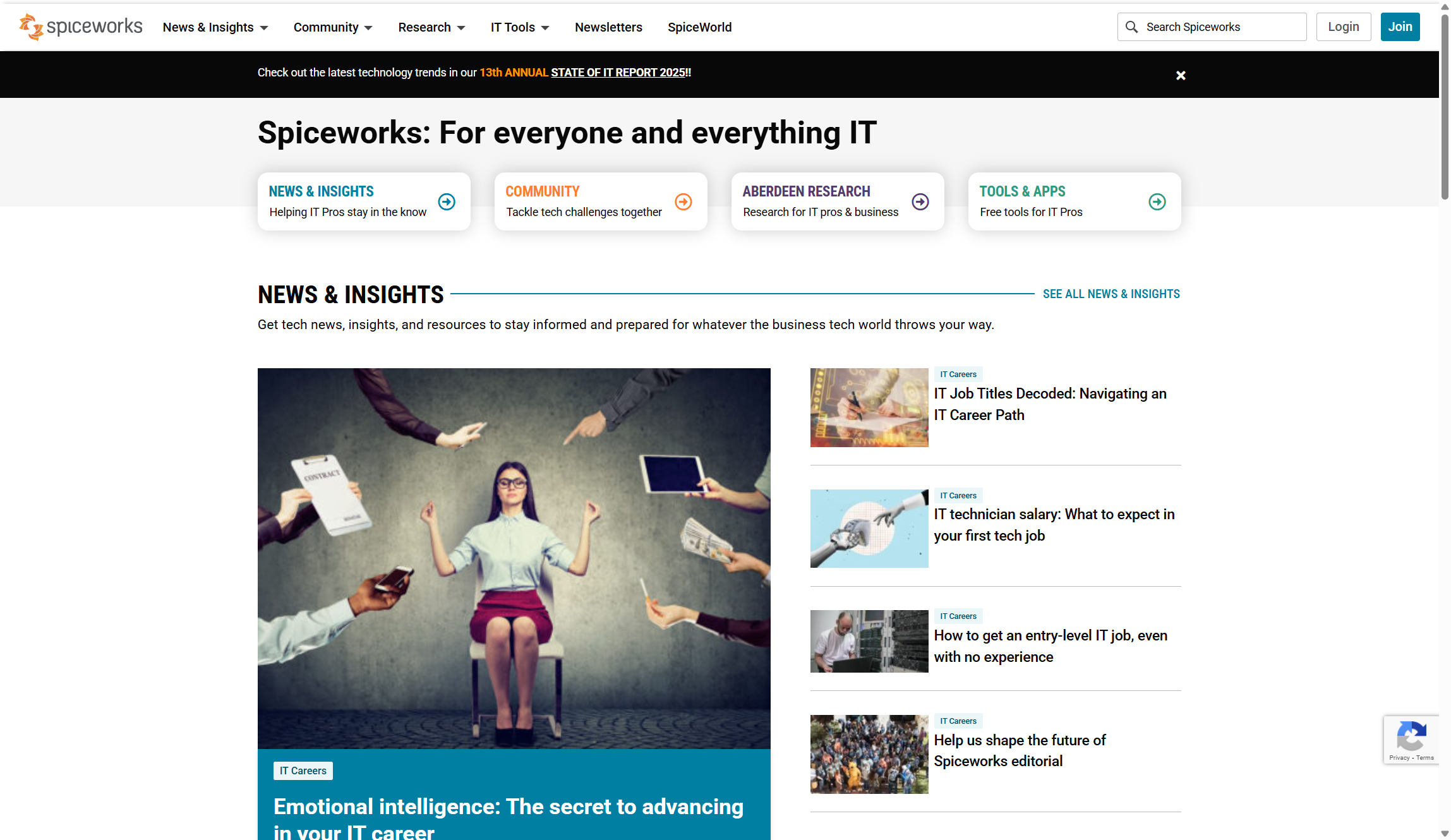TechRadar Verdict
Spiceworks offers great functionality for a free help desk tool. It's perfect for small to medium-sized IT teams. That said, the in-app ads and performance hiccups can be a bit of a hassle. However, its strong features and ease of use make it a strong choice for budget-conscious organizations.
Pros
- +
Completely free with no limitations
- +
Intuitive ticket management system
- +
+ Strong community support
Cons
- -
Intrusive advertisements
- -
Occasional performance issues
- -
Limited advanced features
Why you can trust TechRadar
Spiceworks offers a complete IT service management solution that's packed with features — for free. We found it very easy to set up, needing little configuration to manage tickets. The clean interface is very easy to navigate, but the ads can be a bit distracting.
The ticketing system is central to Spiceworks' functions. It lets your team track and manage IT support requests via email and a customizable self-service portal. We liked the automated notifications and response templates. They made the overall workflow smoother and improved communication with users. The platform also has useful asset management tools that work well with the help desk, giving you a full view of our tech setup.
Spiceworks impressed us with its strong reporting tools and customization options. However, we did face some performance issues during testing. Sometimes, the system took longer than expected to restart after shutdowns. We also experienced a few moments where the app became unresponsive. Despite these issues, the overall value is compelling, especially for smaller organizations with tight budgets that don't need enterprise-level features.
The cloud-based version of Spiceworks replaced the desktop app after December 2021. It provides the same core functions with the added benefit of access from anywhere. The mobile apps offered easy access to tickets, though they had limited functionality compared to the full web interface. For organizations looking for a free way into help desk automation, Spiceworks strikes a strong balance of features, usability, and community support. And for those wanting more than that, there's a Premium version at $6 per user per month.

Spiceworks: Plans and pricing
Spiceworks has a unique pricing model. It offers a free tier and a new Premium option for teams needing more features. The Core plan is free for up to 5 seats. There are no limits on tickets, users, or storage. This makes it great for small to medium-sized businesses with limited IT resources. Our testing showed this approach is clear and easy to understand. However, the free version does show ads, which can distract from support tasks.
For teams with 5 or more users who want an ad-free experience, Spiceworks offers a Premium tier. It costs $6 per seat per month. This option includes all the features of the free version without ads. It provides better value than many competitors in the help desk market. We liked that Spiceworks keeps its pricing simple with just two tiers. There are no complex features or hidden costs, making budgeting easy for organizations of any size.
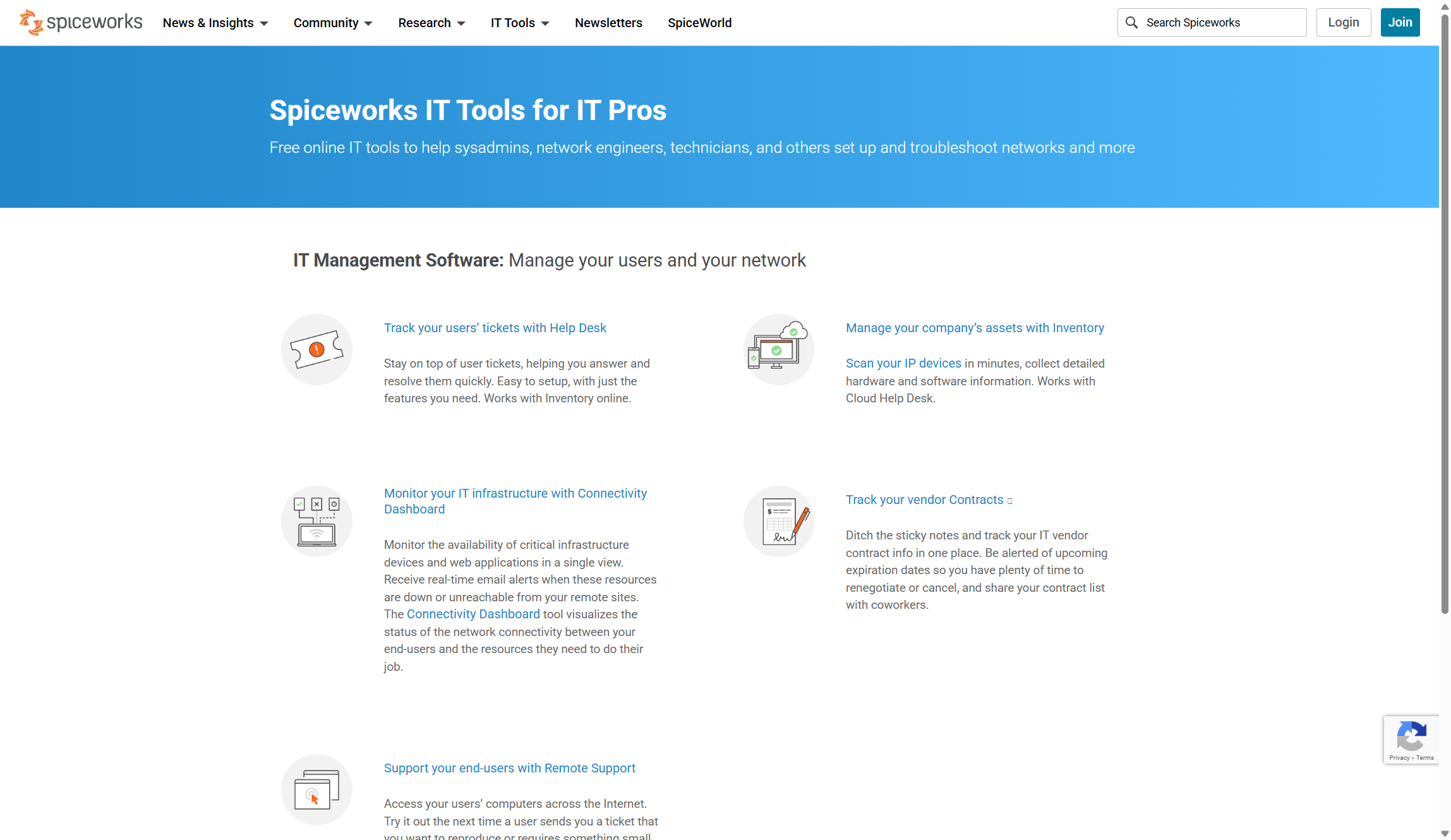
Spiceworks: Features
Spiceworks offers a complete set of help desk tools for IT support teams. In our tests, we found the platform balances functionality and ease of use well. It has intuitive workflows without losing depth. Here are the standout features that impressed us the most.
Sign up to the TechRadar Pro newsletter to get all the top news, opinion, features and guidance your business needs to succeed!
Ticket management
The ticket management system is key to Spiceworks. It provides flexible options for creating, assigning, and tracking support requests. We found the email integration very useful. It automatically turns incoming messages into tickets while keeping the entire conversation history. The customizable ticket fields and status workflows let our team tailor the system to our needs. However, we sometimes wanted more advanced automation for complex routing scenarios.
Knowledge base
Spiceworks has a strong knowledge base feature. It helped our team cut down on repetitive support requests by offering self-service options. We liked how simple it was to turn resolved tickets into knowledge base articles. These articles included rich formatting, attachments, and internal notes. The platform also provides public and private knowledge base options. This lets us share some information with end users while keeping other documents for internal use only.
Asset management
The integrated asset management tools give clear insights into your IT infrastructure and support activities. In testing, the network scanning tool successfully found and listed our devices. It gathered detailed data on hardware specs, installed software, and warranty status. Linking tickets to specific assets helped our support team understand issues better. However, we noticed that the scanning sometimes missed devices or provided incomplete information.
Community support
Spiceworks has a unique advantage with its large IT community. This community acts as a support resource and a professional network. Our team often found answers to technical issues in the community forums. Thousands of IT professionals share advice and troubleshooting tips there. The link between the help desk and the community lets you search for solutions while working on tickets. This can save you a lot of research time.
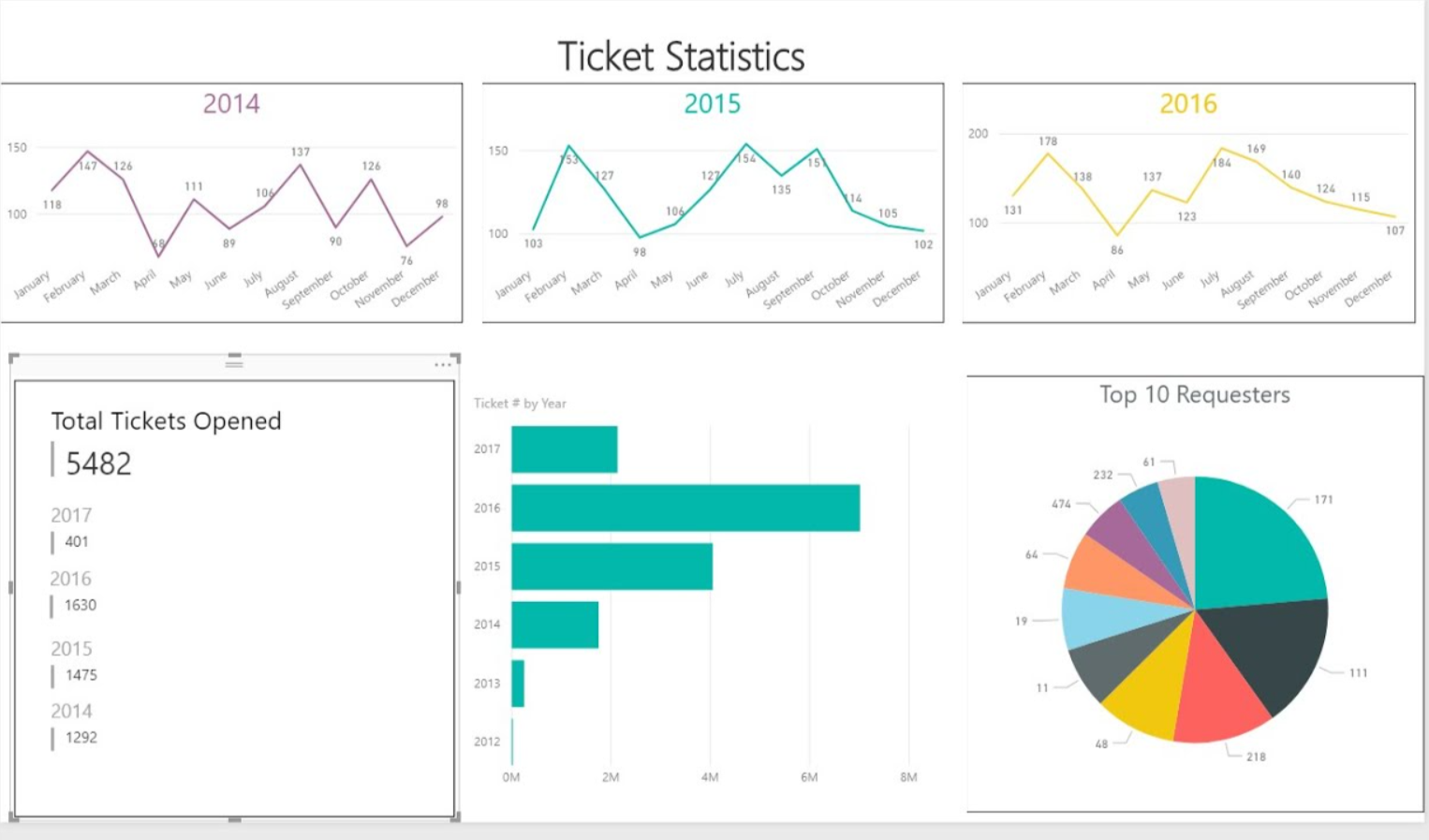
Spiceworks: Analytics
Spiceworks offers strong reporting tools that show help desk performance and workload distribution. During testing, we found that the pre-built reports covered most key metrics we needed. These included ticket volume, resolution times, and support team performance. The dashboard gives quick insights through customizable widgets. However, we sometimes wanted more flexibility to create fully custom visualizations.
The platform also has advanced reporting features. You can add filters or mix filters to make reports that fit your needs. We liked generating reports that ranged from simple overviews of open tickets to detailed analyses of pending tickets over specific timeframes. For organizations needing deeper data analysis, Spiceworks provides a custom Power BI Desktop Data Connector. This tool lets you pull data directly from your Cloud Help Desk account and refresh it into your Power BI report template with one click after setup.
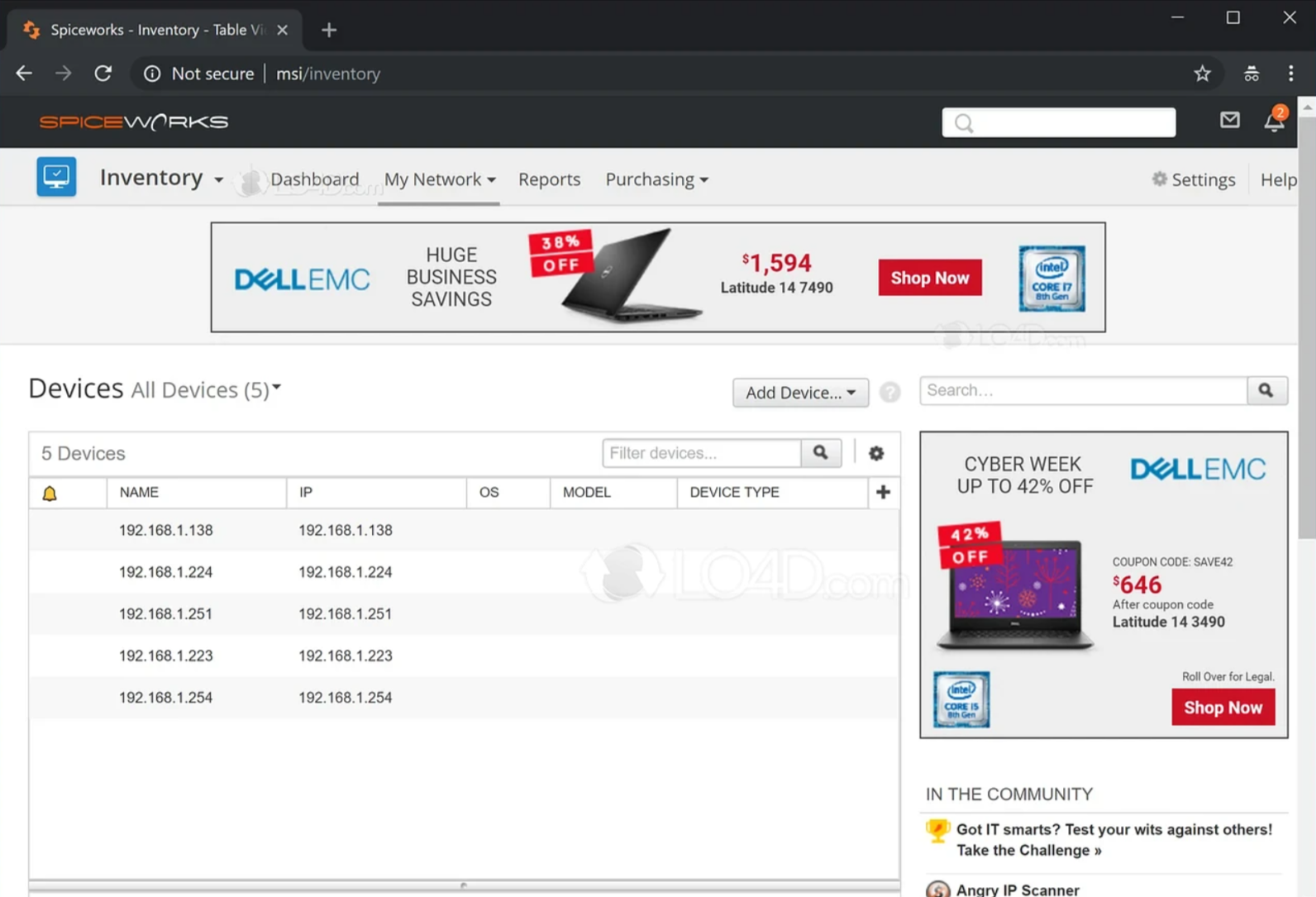
Spiceworks: Ease of use
Spiceworks has an easy-to-use interface. Even team members with limited tech skills found it simple to navigate. The dashboard gives a clear view of ticket status, recent activities, and key metrics. The menu structure is logical, making it easy to access different features. During testing, we liked the contextual help tips and the option to customize views. However, we sometimes had to click through multiple screens to finish tasks.
The ticket creation and management process is straightforward. It has clear status indicators and lets users quickly assign, prioritize, and categorize support requests. We found the email integration user-friendly. It allows users to create and respond to tickets without logging into the system. The knowledge base editor feels like a familiar word processor, making it easy to create and format documentation. However, the search function sometimes struggled to return the most relevant articles when using partial keywords.
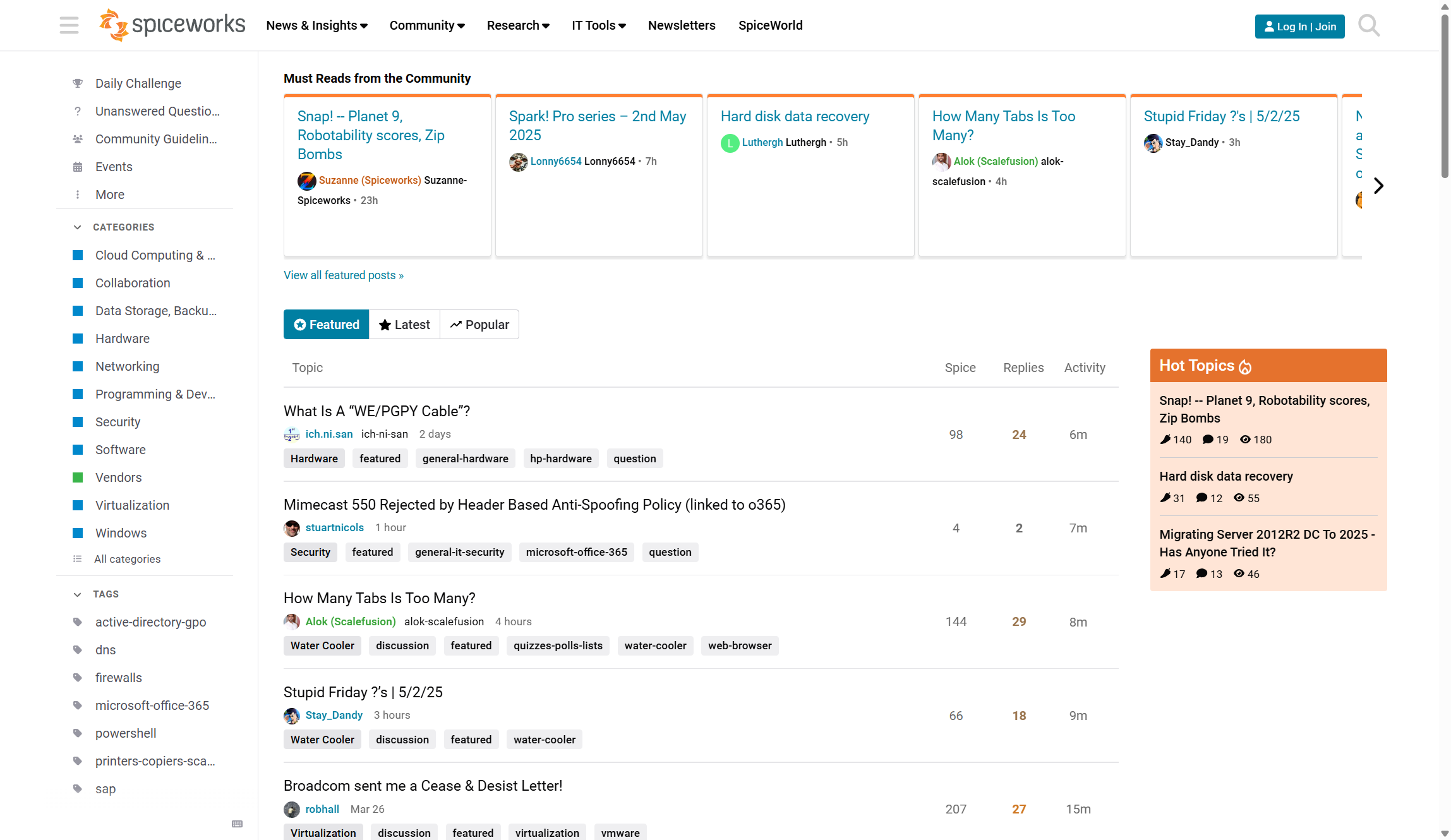
Spiceworks: Support
Spiceworks offers different support channels, each with varying response times based on your tier. We found the knowledge base and community forums to be the most useful. They often provide solutions faster than direct support. Premium users enjoy priority email support, which has quicker response times. Free users can submit tickets but may wait longer for complex issues. The company also provides regular webinars and training resources to help users maximize the platform.
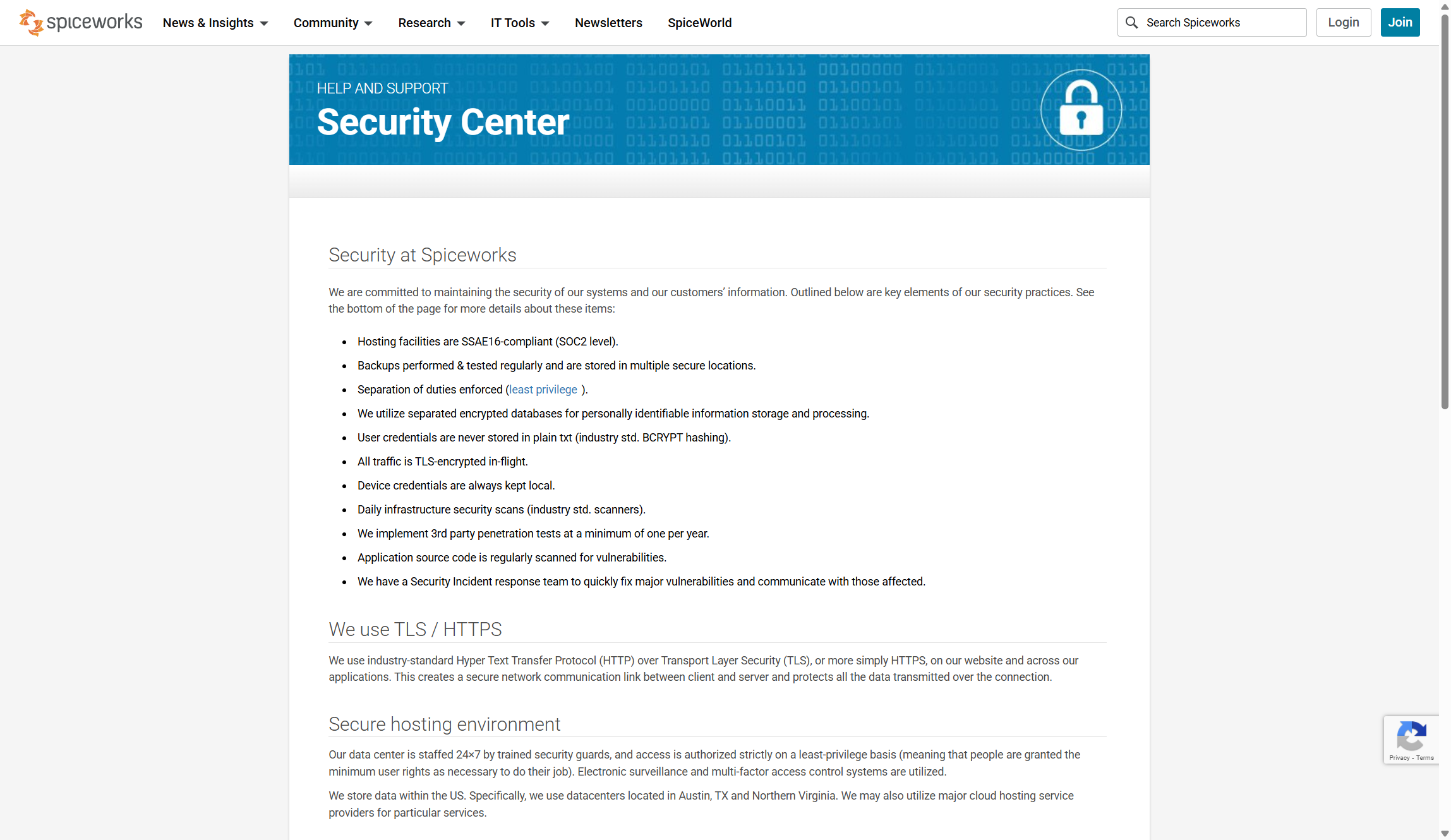
Spiceworks: Security
Spiceworks takes security seriously. They use industry-standard measures to protect sensitive help desk data. Our testing showed that the platform uses TLS encryption for data in transit. Regular security audits and SOC 2 compliance add extra reassurance. The granular permission system lets administrators control which team members can access certain information and perform specific actions. However, we would have liked more detailed audit logging to track user activities in the system.
Spiceworks: The Competition
For organizations looking for alternatives to Spiceworks, Freshdesk is a strong choice. It has a better ticketing system with advanced automation and a clean, ad-free interface, even at lower tiers. In our testing, we found Freshdesk's multichannel support and AI features to be more comprehensive. However, its pricing can rise quickly, especially as you add users and features, making it pricier than Spiceworks' Premium tier.
ManageEngine ServiceDesk Plus is another solid alternative, especially for larger organizations needing ITIL compliance and better workflow customization.
For teams focused on project management but with some help desk needs, Jira Service Management offers better integration with development workflows and more customization. Zendesk is also a strong competitor, providing better omnichannel support and advanced reporting tools, but it comes at a significantly higher cost than Spiceworks.
But for organizations on tight budgets, Spiceworks' free tier stands out for its functionality without any financial commitment.
Spiceworks: Final Verdict
Spiceworks offers great value as a help desk solution, especially for small to medium-sized organizations with tight IT budgets. In our testing, we saw that the platform balances functionality and simplicity well. It provides essential help desk features in an easy-to-use package that doesn't need a lot of training.
While the ads in the free tier can be distracting, and some advanced features from premium competitors are absent, the affordable Premium tier is a strong option. It makes Spiceworks appealing for growing teams that need dependable ticket management without overspending.
We've compiled a list of the best live chat software.

Ritoban Mukherjee is a tech and innovations journalist from West Bengal, India. These days, most of his work revolves around B2B software, such as AI website builders, VoIP platforms, and CRMs, among other things. He has also been published on Tom's Guide, Creative Bloq, IT Pro, Gizmodo, Quartz, and Mental Floss.
You must confirm your public display name before commenting
Please logout and then login again, you will then be prompted to enter your display name.
